What is the Tran Family Chapel Like?
The Tran Family Chapel is located at 21 Le Loi Street, right in the heart of Hoi An’s pedestrian-only Ancient Town. From the outside, it looks like a modest traditional house, but inside you’ll find a peaceful courtyard garden, an altar room for ancestor worship, and a collection of family heirlooms that have been passed down for generations.
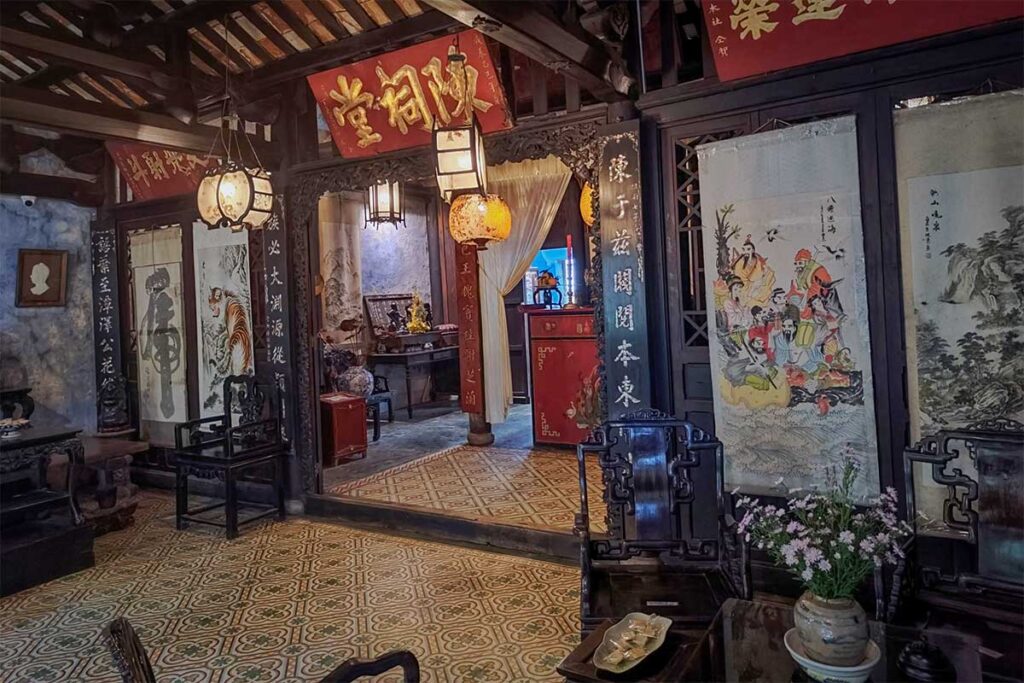
The house is still maintained by the descendants of the Tran family, who offer short guided introductions to visitors. It functions as a mix of historic family memorial and cultural site, with part of the house now used as a souvenir shop selling antiques, coins, and incense. While the setting is intimate and authentic, the commercial aspect may feel distracting to some.
Hoi An Walking Tour by Local Guide
- Experience Explore Hoi An’s Ancient Town with an expert local guide and insider stories.
- Includes Market visit, traditional house, colorful temples, and coffee break by electric car.
History of the Tran Family Chapel
The Tran Family Chapel was built in 1802 by Tran Tu Nhac, a respected mandarin under Emperor Gia Long. Before departing on a diplomatic mission to China, he constructed the chapel as a place to honor his ancestors and preserve the values of loyalty, education, and tradition within the family.
It became both a spiritual center and a teaching space — where younger generations learned about their lineage and responsibilities. As one of the oldest ancestral houses in Hoi An, it has been carefully maintained by the family for over 200 years.
The chapel also reflects the lifestyle of Hoi An’s wealthy merchant families during the height of its trading era, combining cultural pride with strong Confucian values rooted in respect for family and heritage.
Architecture & Highlights
The Tran Family Chapel may be small, but it’s full of thoughtful details that reflect its cultural importance and long history. Here’s what to look for during your visit:
1. Traditional layout & garden
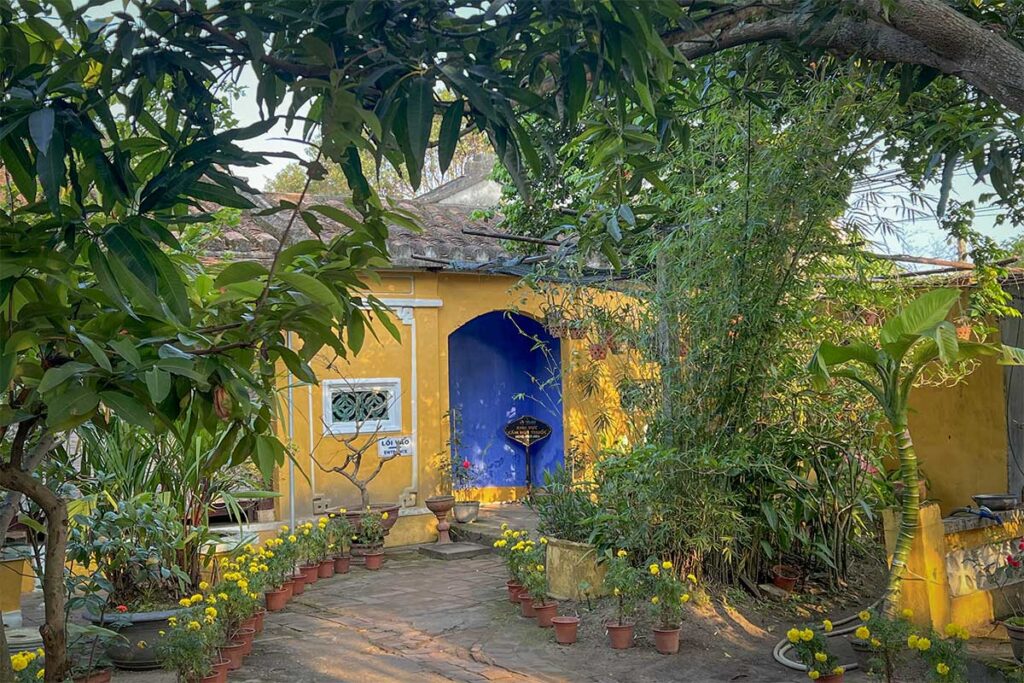
The house follows a classic Vietnamese garden house layout, but with clear influences from Chinese and Japanese architecture — a style typical of wealthy merchant families in Hoi An’s trading era. As you enter, you’ll pass through a small courtyard with ornamental plants, fruit trees, and bonsai, designed according to feng shui principles to create harmony between nature and structure.
2. Ancestral altar room
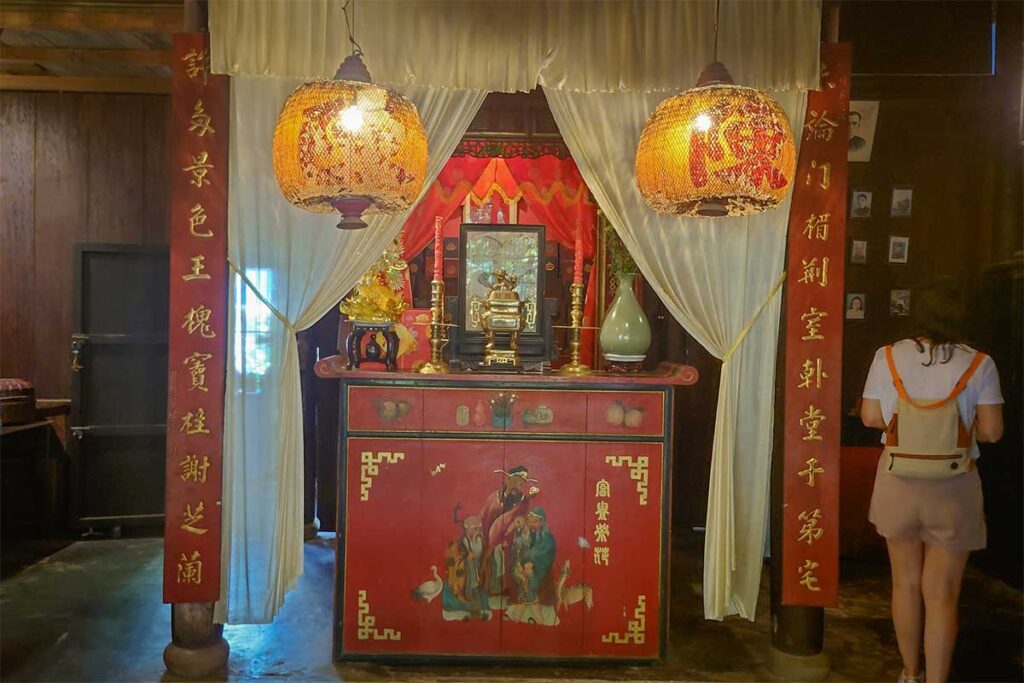
At the heart of the chapel is the ancestral altar room, where offerings are made and family rituals are carried out.
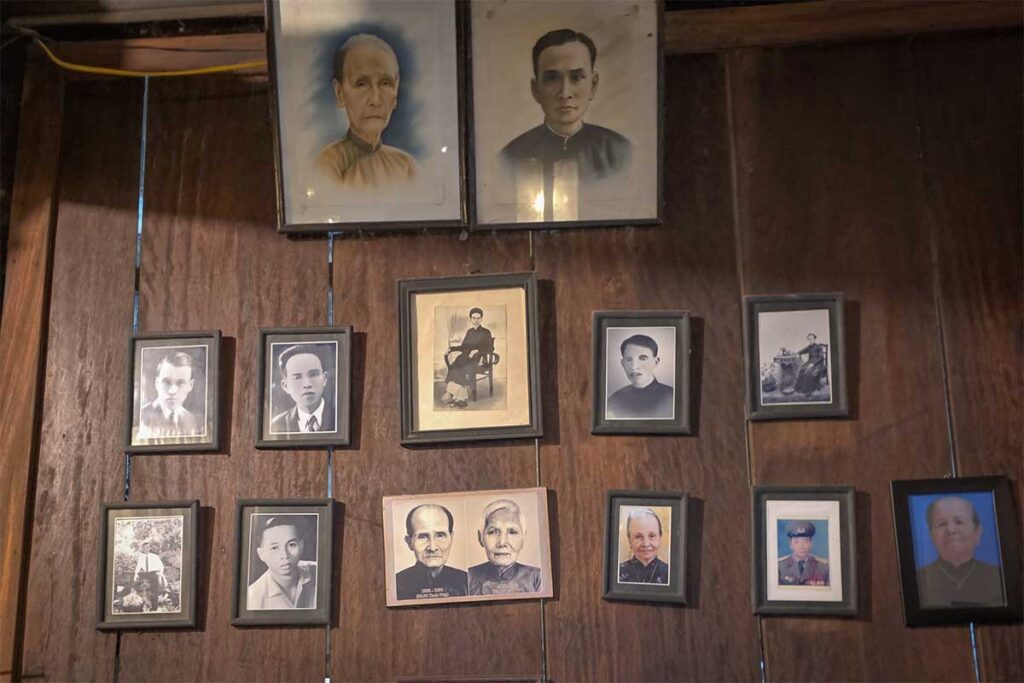
The space is laid out with framed portraits, incense burners, and ceremonial objects, giving insight into how the Tran family honors its ancestors. Following tradition, the room has separate entry paths for men and women, while a central door is kept for the spirits during special ceremonies like Tet.
3. Heirlooms & Historic objects

The interior holds a variety of historic family artifacts, including original wooden furniture, Nguyen dynasty relics, and old family photos.
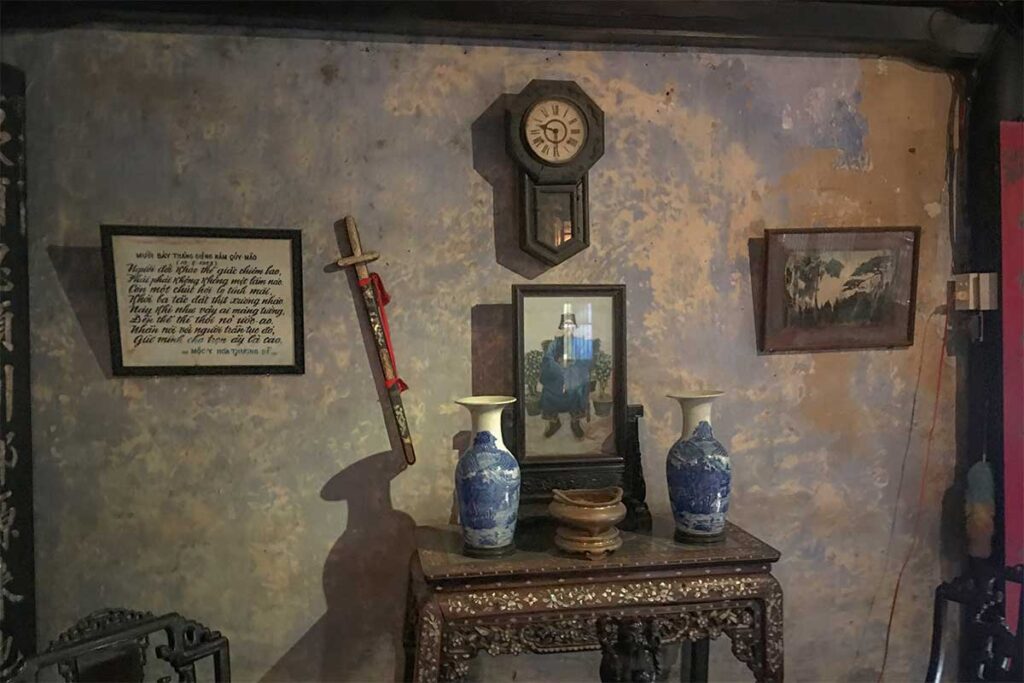
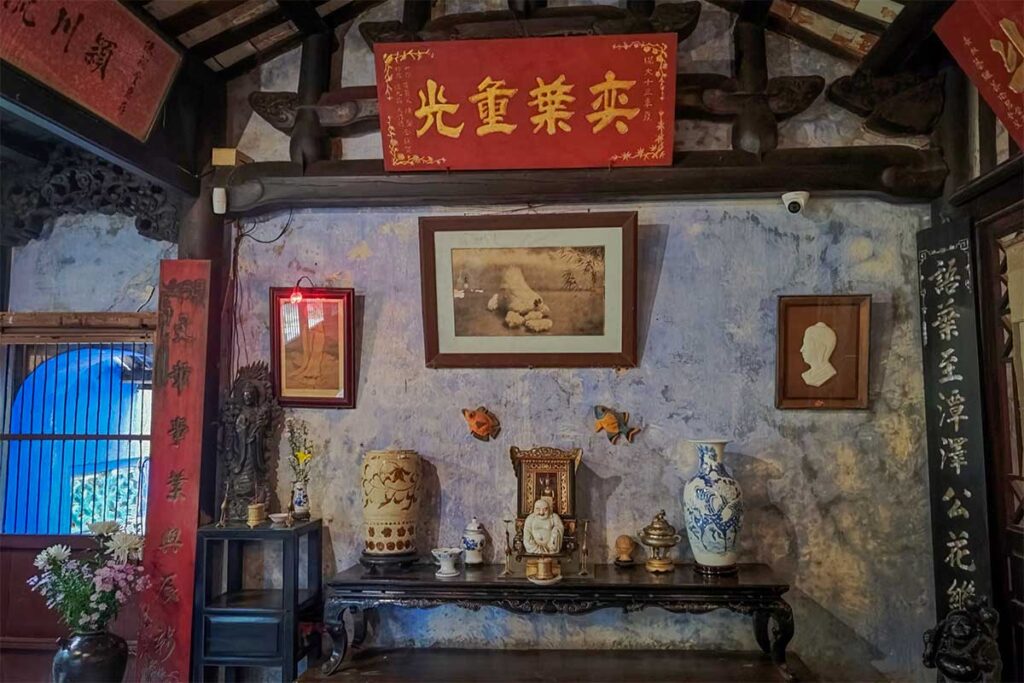
Notable items include a sword and seal said to belong to Tran Tu Nhac, as well as poems, lacquered calligraphy boards, and a detailed family genealogy — all preserved to reflect the Tran family’s long-standing role in Hoi An’s history.
4. Feng Shui details & Symbolism
The layout and decorations follow the Five Elements system: Metal, Wood, Water, Fire, and Earth — a key part of feng shui practice. From the direction of the altar to the balance of materials used, each element was chosen to create spiritual harmony and maintain energy flow within the home.
5. Souvenir area
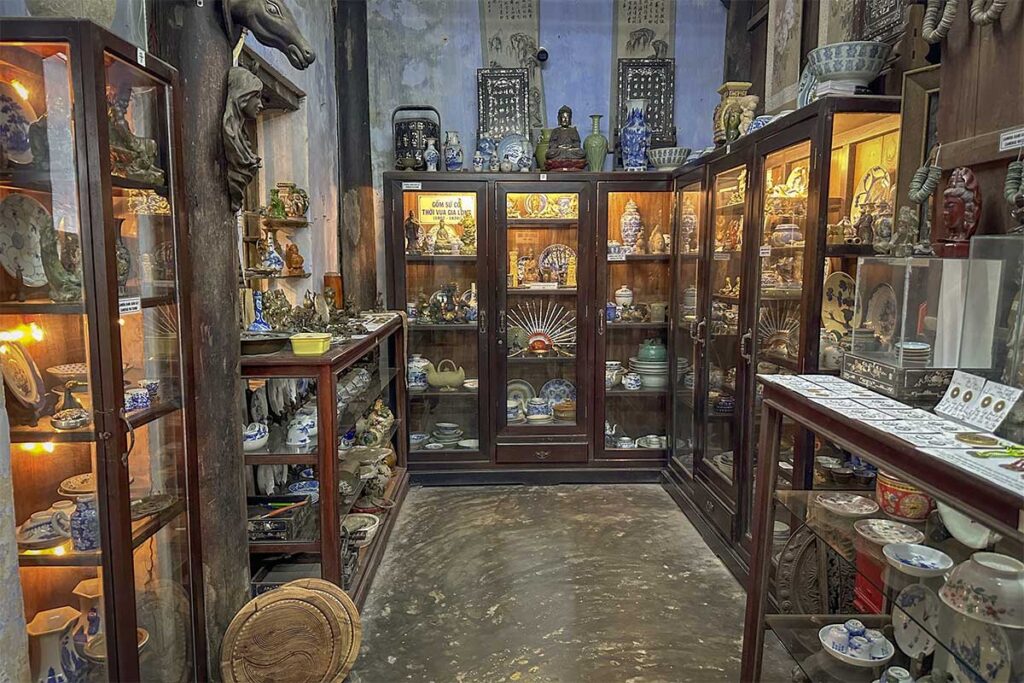
The back section of the house functions as a souvenir and antique shop, where you’ll find incense, “lucky” coins, and vintage items. While some visitors enjoy browsing and supporting the family business, others feel that the commercial setup distracts from the cultural atmosphere. It’s good to know this in advance — you’re not required to buy anything, and a polite no is enough if you’re not interested.
Visiting information
Location
The Tran Family Chapel is located at 21 Le Loi Street, right in the center of Hoi An’s Ancient Town. It’s just a short walk from key landmarks like the Japanese Covered Bridge, Fujian Assembly Hall, and Hoi An Market.

Getting there
The chapel is easily accessible on foot from anywhere within the Ancient Town. If you’re staying farther out — in areas like An Bang Beach, Cam Thanh, or the countryside — you can take a bicycle, taxi, or private car to the edge of the pedestrian zone, then walk the rest of the way.
Opening times
Opening hours can vary depending on the source, but most report the chapel being open from around 7:00 AM to 9:00 PM, while others note 8:30 AM to 6:00 PM as standard hours. To avoid crowds and enjoy a quieter visit, aim to come in the early morning or late afternoon.
Entry ticket
The Tran Family Chapel is included in the Hoi An Ancient Town ticket, which costs 120,000 VND. This ticket gives you access to five heritage sites of your choice, and the chapel counts as one of those five. If you’re short on time or only interested in the bigger highlights, it’s worth considering how it compares to assembly halls, museums, or heritage houses before using one of your entries here.
Etiquette
Although it’s open to visitors, this is still a private family space with cultural and spiritual significance. Dress modestly, speak quietly, and avoid touching artifacts or stepping too close to the altar. You’re welcome to browse the souvenir shop, but don’t feel obligated to buy anything — a friendly smile and polite “no thank you” is enough.
Is the Tran Family Chapel worth visiting?
Yes — but with a few important things to keep in mind. The Tran Family Chapel is a peaceful and authentic stop, offering a short but meaningful look into Vietnamese ancestor worship and Hoi An’s merchant history. The space is small and the visit is brief, but it’s a nice contrast to the larger, more touristy sites. You’ll also get a short guided introduction, often directly from a family member or staff.
That said, because it’s one of the five sites included in the Ancient Town ticket, it’s worth thinking carefully before choosing it. Compared to assembly halls, temples, or museums, this house is more modest in scale. If you’re working through your ticket choices, a good strategy is to see your top priorities first, and then decide whether to use one of your final entries here — especially if you’re in the mood for something quiet and less crowded.
It’s a good pick for history lovers, solo travelers, and those curious about family traditions in Vietnam. But if you’re after something more visually dramatic or interactive, you might want to save your ticket slot for one of the larger heritage sites.




